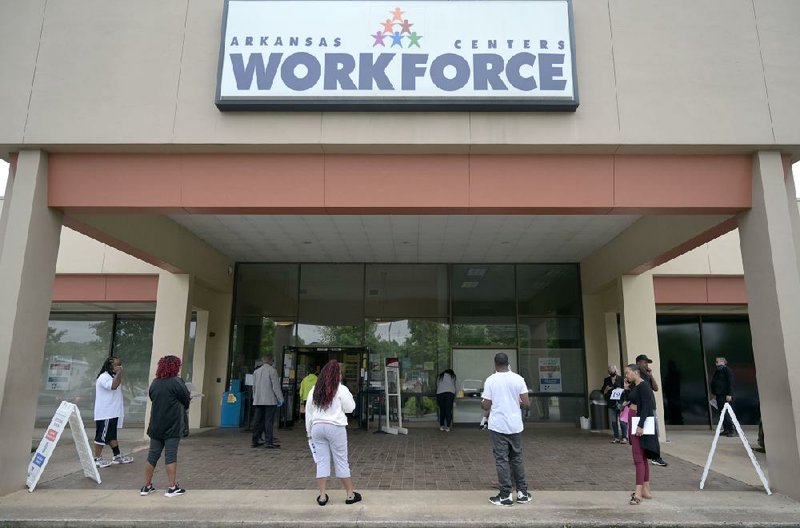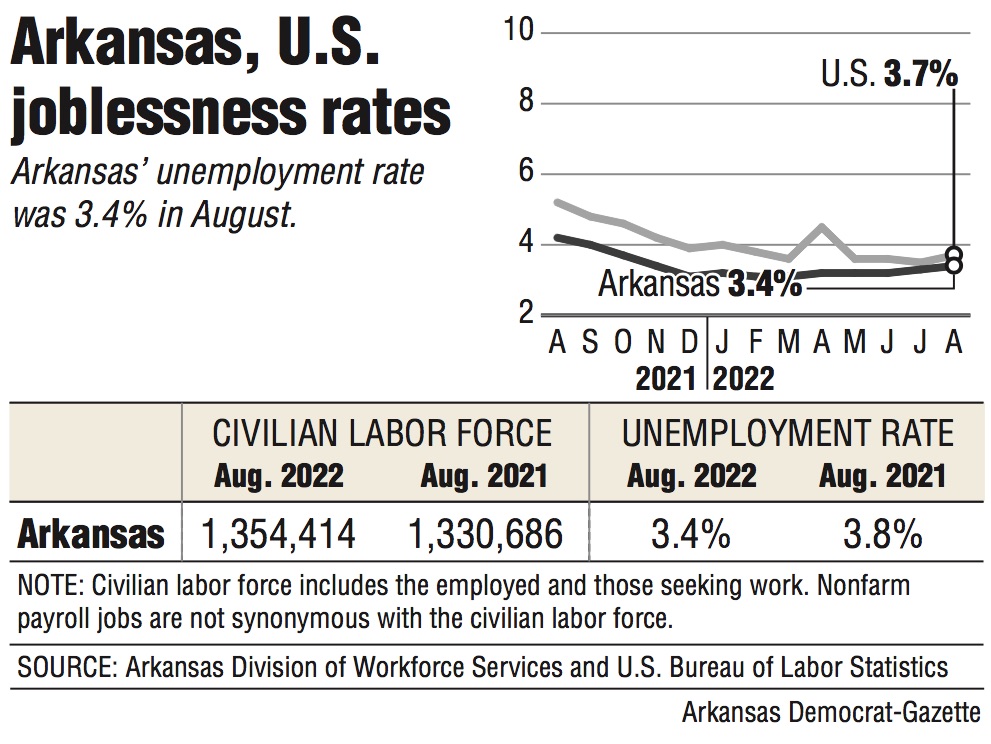Unemployment in Arkansas increased by one-tenth of a percentage point in August, rising for the second consecutive month, to 3.4% while remaining just below the U.S. rate of 3.7%.
The Arkansas Division of Workforce Services reported Friday there were 2,648 fewer Arkansans employed and just more than 1,000 unemployed in August. Nonfarm payrolls added 4,000 jobs, reaching 1.3 million employed Arkansans.
Five major industry sectors added workers, boosted by a 3,800 increase in government jobs as teachers and support staff returned to the classroom.
Arkansas generated "strong job numbers in key sectors," Commerce Secretary Mike Preston said Friday. "Overall, the numbers are still positive for Arkansas."
Preston highlighted the year-over-year job improvements across most industry sectors. "We still have more than 28,000 Arkansans employed today," he said. "There's progress from [where] we were in last year."
The trade, transportation and utilities sector registered the biggest decrease in August, dropping 1,900 jobs.
Another key metric, the state's labor force, dropped by 1,628. Year-over-year, the labor pool is up 0.4% to 56.8%, still about five points lower than the national average.
"That's the big hurdle," Preston said of the labor force decline in August. "If we could just get ourselves up to the national average that would fill at least 70,000 to 80,000 jobs we have open in our state."
The downward shift in the number of employed to 2,648 was the first monthly decline since December, according to Michael Pakko, chief state economist with the Arkansas Economic Development Institute at the University of Arkansas at Little Rock.
However, the change is not alarming, Pakko said Friday. "Basically there was seven months of growth and one month of mild decline," he added. "One month doesn't bother me; that stuff happens all the time. One month different in itself is not meaningful."
Leisure and hospitality achieved significant job gains year-over-year, Pakko said, with the sector adding 7,300 jobs across all subsectors, including accommodation and food services and arts, entertainment and recreation.
"It's good that we're seeing continued recovery in the leisure and hospitality sector," Pakko said. "That was one of the hardest hit areas 2½ years ago and it's still not all the way back to where it was before the pandemic. We had a really strong month and generally it's coming back pretty good."
Manufacturing also delivered robust growth over the past year, adding 7,400 jobs.
"Manufacturing is an area that continues to be strong for Arkansas," Preston said.
He said Arkansas' central location in the United States showcases the state's solid transportation infrastructure.
"Because of supply chain issues, a lot of companies are looking domestically more for production needs as opposed to waiting for it to come from China," Preston said. "We've benefited from that."

